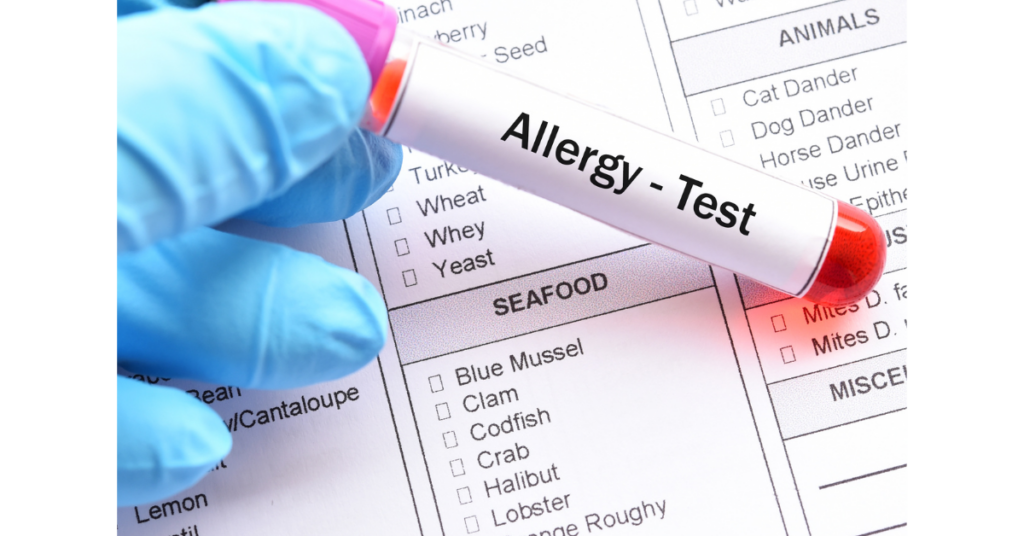What is Allergy Testing?
There are toxins all around us all the time, in the tap water we drink, in the air we breathe, and in the food we eat. Most of us are able to fight off these environmental toxins, but some of us develop allergic reactions to such substances.
Some people are allergic to certain foods even though they have no traces of pollutants on them – they just have an allergic reaction!
An allergic reaction can be in the form of an inflammation or a reddening right through to stomach bloating, headaches, depression and, some believe, even a change in brain chemistry. It is not always easy for those with allergies to identify what it is they are actually allergic too. Is it the dog’s hair or the dust mites? Is it the wheat in the biscuit or the sugar content?
By consulting a practitioner who deals with allergies, you will be able to ascertain just what substances you are allergic to and then work out a method whereby you either avoid the allergens altogether or become ‘desensitised’ to them.
(See also our article on Allergy / Allergies)
Main uses
Asthma, headaches, depression, recurrent infections, fatigue, skin disorders, rheumatoid arthritis, rapid weight fluctuation, fluid retention, and digestive disorders.
What to expect when you visit a therapist?
You will be asked questions relating to your medical history and perhaps that of your immediate family. Lifestyle questions, such as stress levels, diet, exercise regimes, and sleep patterns will be asked to ensure that an holistic approach is taken as well as asking you, the patient, what expectations you have of the treatment.
During a visit to the practitioner you will be given advice on homecare, which may include advice on how to reduce your exposure to allergens such as dust mites, and how to avoid chemicals.
This article provides general information of what to expect when you visit a therapist, and a general theory behind how the discipline works. It must be noted, however, that every therapist works in an individual way, and may subscribe to slightly different theories on how the discipline works. It is always advised that you ask to see relevant qualifications and discuss the treatment offered to you by the practitioner if you are in any doubt whatsoever.
There are a variety of test undertaken in order to diagnose allergies, and there are a diverse number of ways in which you can treat allergies and intolerances. These include:
Scratch test is where the patient’s skin is scratched with a needle that contains a portion of the food, irritant, or chemical that is being tested for. After a short period of time the area is inspected to see if a reaction has occurred. If so, it is assumed that the person is allergic to the substance. If the substance is food you will be advised to eliminate it from your diet for 10-14 days, after which time you can introduce the food or foods one at a time to see if a reaction reoccurs.
Muscle testing / kinesiology involves placing the suspected allergen onto the tongue or the body and testing your ability to resist pressure directed onto a limb.
Radioallergosorbent test (RAST) involves testing the blood for the antibody immunoglobulin E indicating an allergic reaction.
Desensitisation is where the allergen is placed next to the skin in the hope that the body will produce enough antibodies over a period of time, so you no longer react badly to it.
Provocation neutralisation is when various concentrations of the irritant are injected under the skin or given as drops on the tongue. The concentrations diminish in strength until the practitioner finds the one that you no longer react to. This is then the one that you should use as a medicine.
Vega test is a low voltage current directed onto acupuncture points with suspected allergens placed in the machine; a change in readout indicates an allergic reaction.
Sublingual drop test is where the patient is restricted to a fluid intake and then after five days a drop of solution containing the irritant is placed on the tongue to check for reactions.
History (in brief)
Hippocrates, the father of medicine in ancient Greece, recorded cases of reactions to food, but it wasn’t until 1906 when paediatrician Baron Clemens E von Pirquet used the term ‘allergy’ to explain why some of his patients reacted to particular foods, chemicals, stings, and other environmental pollutants.
Two other main figures in the history of allergy study and testing are Dr Theron G Randolph and biologist Rachel Carson, both from the US.
Dr Randolph claimed that allergies to certain foods produced certain conditions and ailments in some people, illness such as arthritis, headaches, fatigue, and skin reactions.
Rachel Carson’s 1962 best-selling book, “Silent Spring”, highlighted the dangers of pesticides and insecticides.
Clinical Ecology – as the study of allergies is called – took off in the UK in the 1970’s and is a growing discipline today.


